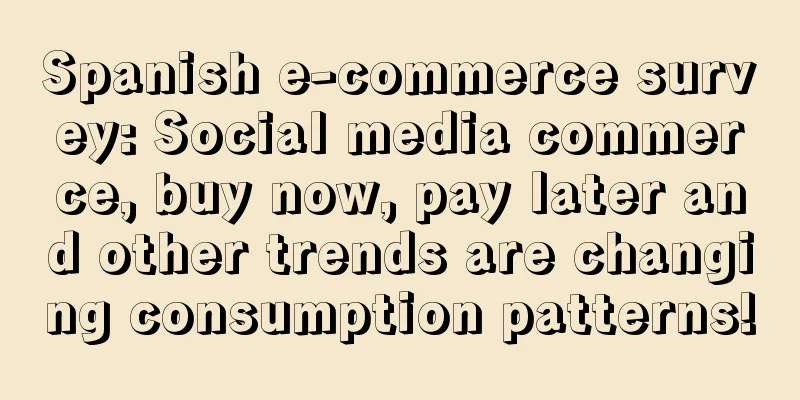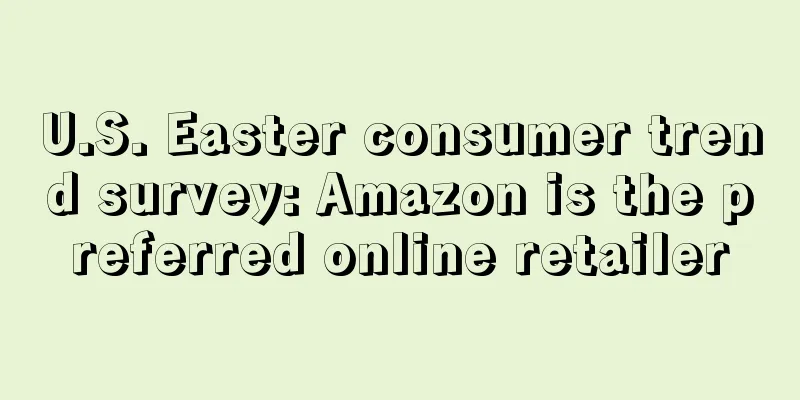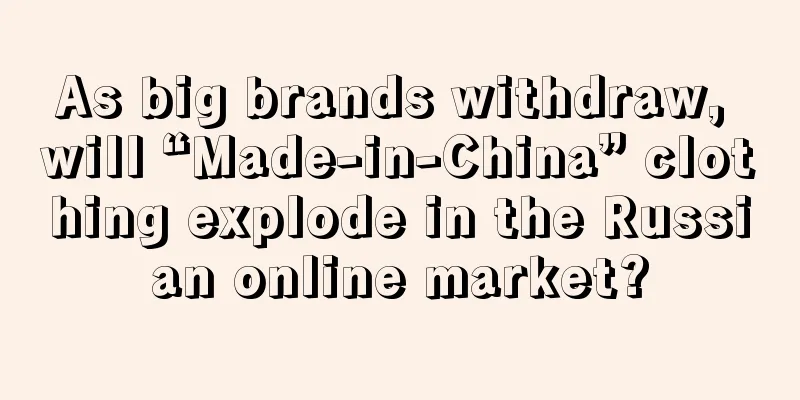Spanish e-commerce survey: Social media commerce, buy now, pay later and other trends are changing consumption patterns!

|
In recent years, more and more consumers have chosen to shop online because it provides convenience and flexibility . The Spanish market is no exception. According to the E-commerce Index, e-commerce in Spain achieved a sales growth of 17% in 2022, which is nearly twice the EU data.
The survey shows that 55 % of Spanish consumers shop at least once a week , which is very close to the European average of 65% (2 out of every 3 consumers shop online every week). In addition, the average monthly spending of Spaniards on products and services is 252 euros.
In terms of product categories, Spanish consumers are more likely to buy clothing and accessories online ( 54%), food and beverages ( 44%), pay bills (39%), supermarket products (32%), and health and beauty items (33%). These data reflect consumers' preferences in terms of consumption.
The study also found that around 50% of respondents in Spain said they had used their mobile phones to shop , a figure that is in line with the European average. This figure shows that mobile phones have become the main channel for online shopping . E-commerce trends in Spain
To increase e-commerce online sales, it is important to understand the trends among consumers. Therefore, let’s take a closer look at these trends and analyze how they are changing the e-commerce landscape in Spain.
1. Social media commerce is gaining traction
Social media commerce is becoming an increasingly attractive option for consumers. According to a survey by Paypal, 37% of respondents in Spain said they had made purchases through social platforms in the past 6 months , spending an average of 102 euros per month . Among the many social shopping platforms , the most popular are Instagram (15%), YouTube (14%) and Facebook (12%). Among the products that Spanish consumers buy most on social platforms , clothing and accessories top the list ( 31%), followed by health and beauty products (23%) and video games (22%).
2. The number of people choosing “ buy now, pay later ” is increasing
Buy now , pay later options have become increasingly popular in the e-commerce space in recent years . According to the E-Commerce Index report, apparel and accessories lead the way in categories with deferred payment options.
The report shows that platforms that offer buy now, pay later (BNPL) options are more likely to make a purchase than those that do not . In addition , this payment method is not only beneficial to consumers, but also to businesses, as businesses can increase their conversion rates and customer loyalty by offering payment options that suit customer needs. Providing BNPL services has become an increasingly important strategy for companies to remain competitive in the e-commerce market.
3. Providing possibilities for cross-border trade
E-commerce offers consumers and brands a range of possibilities to enter foreign markets, with more than a quarter of online purchases made from international retailers. Among Spanish consumers, 51% said they have made cross-border purchases, with the main motivations being the desire to get a better price and to purchase products not available on the domestic market.
Security is an important factor for buyers in this type of purchase , whether domestic or international. For this reason, reliable payment methods provide greater convenience and peace of mind for international transactions.
4. Cryptocurrencies, NFTs, and Metaspace
New trends in the digital world are changing the landscape of e-commerce. Although cryptocurrencies remain the most popular topic, they are currently somewhat undermined . 20% of consumers have already entered the virtual space or plan to join it in the near future . In addition, surprisingly, 14% of Spanish consumers believe that the virtual space will become an important shopping channel in the future.
On the other hand, although 23% of respondents are interested in learning more about NFTs, for now, NFTs have not received enough attention . Spain E-commerce |
<<: Temu, America's New Age Dollar Store
Recommend
It became number one in the category within half a year and broke out of the red ocean!
People in the industry often think that cross-bor...
Shopify's Q2 revenue was $1.3 billion, with a three-year compound growth rate of 53%
On July 27, local time , Shopify released its sec...
What is AjMall? AjMall Review, Features
AjMall is a mobile e-commerce platform targeting ...
Russian e-commerce company Ozon acquires bank, increases investment in financial services
The acquisition of Oney Bank will enable Ozon to ...
European pet e-commerce company Zooplus grows strongly, with sales exceeding 500 million euros in the first quarter
According to foreign media pet business world, Zo...
Taobao and Tmall are fully integrated, with three centers focusing on consumer and merchant experience
The new structure will "fully focus on user ...
Tokopedia is gaining momentum, with 70% of sellers seeing a 133% sales increase
As a pioneer in Indonesian e-commerce, Tokopedia ...
What is Moonlight Over the Lotus Pond? Moonlight Over the Lotus Pond Review, Features
Lotus Pond Moonlight is a comprehensive e-commerce...
What is lindakale? lindakale Review, Features
Founded in 2014, lindakale is an online mall focus...
What is Black Friday
"Black Friday", the day after Thanksgiv...
Nearly 9,000 teethers recalled due to choking hazard!
The recalled product is a wooden teether from Beb...
What is Sluuf? Sluuf Review, Features
Sluuf is a C2C e-commerce website serving global s...
Amazon is eyeing freight forwarding business!
As the global e-commerce leader, Amazon has been ...
With half-year revenue of nearly 500 million, Shenzhen's best seller is about to go public!
Under the impact of the successive account bans c...
Shopify's monthly rent increased by 34%, and sellers said they would not play with it anymore
In the years when e-commerce was developing the f...









